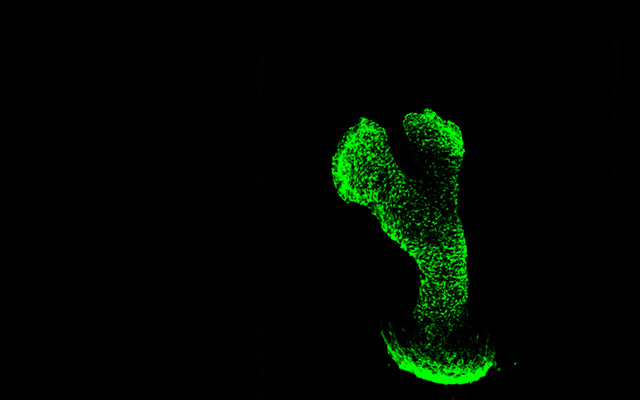Effect of Apigenin on the JAK2/STAT3 Signaling Pathway, Inflammatory Response and Apoptosis of Acne Model Rats
ZHAO Dongli*, LI Zhuqian
This study aims to discuss the effect of apigenin on the JAK2 (Janus kinase 2)/STAT3 (signal transducer and activator of transcription 3) signaling pathway, inflammatory response and apoptosis of acne model rats. Sixty rats were randomly assigned into blank control group, model group, low-dose (L)-apigenin group, highdose (H)-apigenin group, and H-apigenin+JAK2 activator group, each with 12 rats. Except for the blank control group, all other groups were used to construct acne models with Propionibacterium acnes. ELISA (enzyme linked immunosorbent assay) was used to detect IL-1β (interleukin-1β), IL-8, IL-6, and TNF-α (tumor necrosis factor-α) in rat serum. HE (hematoxylin-eosin) staining was used to observe changes in the skin tissue of the right ear. TUNEL staining was used to observe apoptosis of skin tissue cells in the right ear. qRT-PCR was used to measure the mRNA expression of apoptosis regulatory genes Bcl-2 (B-cell lymphoma-2) and Caspase-3. Western blot was used to measure the expressions of Bcl-2, Caspase-3, Cleaved Caspase-3, and proteins related to the JAK2/STAT3 pathway. The results showed that compared with the blank control group, the model group showed an increase in right ear thickness, skin swelling, and cell apoptosis; the serum IL-8, IL-1β, IL-6, and TNF-α increased, the Caspase-3 mRNA and Cleaved Caspase- 3/Caspase-3 increased, the Bcl-2 mRNA and protein decreased, and the p-JAK2/JAK2 and p-STAT3/STAT3 ratios also increased (P<0.05). Compared with the model group, the right ear thickness of rats in the L-apigenin group and the H-apigenin group became thinner, skin swelling was alleviated, apoptosis was reduced; the serum IL-8, IL- 1β, IL-6, and TNF-α reduced, the Caspase-3 mRNA and Cleaved Caspase-3/Caspase-3 decreased, the Bcl-2 mRNA and protein increased, and the p-JAK2/JAK2 and p-STAT3/STAT3 ratios also decreased (P<0.05), and the changes in the H-apigenin group were better than those in the L-apigenin group (P<0.05). Compared with the H-apigenin group, the H-apigenin+Coumermycin A1 group showed an increase in p-JAK2/JAK2 and p-STAT3/STAT3 ratios in rats, and aggravated symptoms of acne and inflammatory reactions in the right ear skin. In conclusion, apigenin may inhibit the inflammatory response in acne model rats by suppressing JAK2/STAT3 signaling pathway.




 CN
CN EN
EN